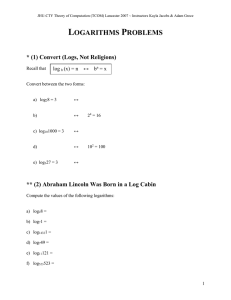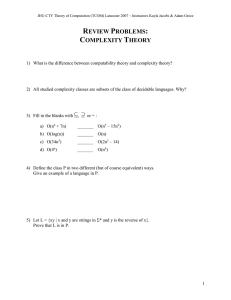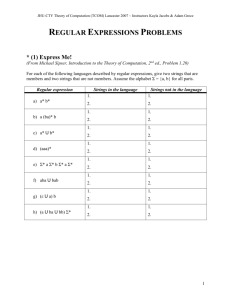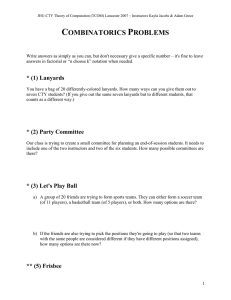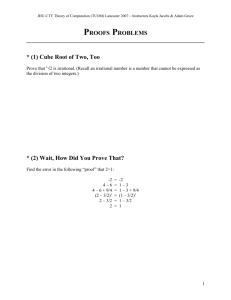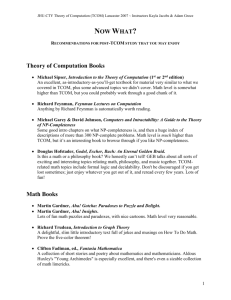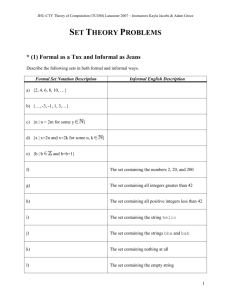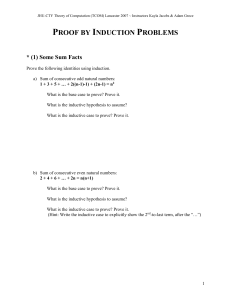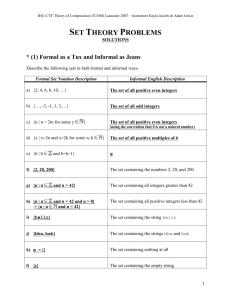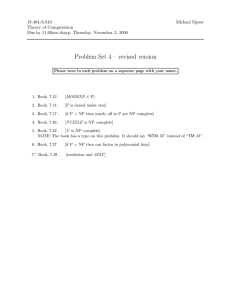CFL PDA P
advertisement
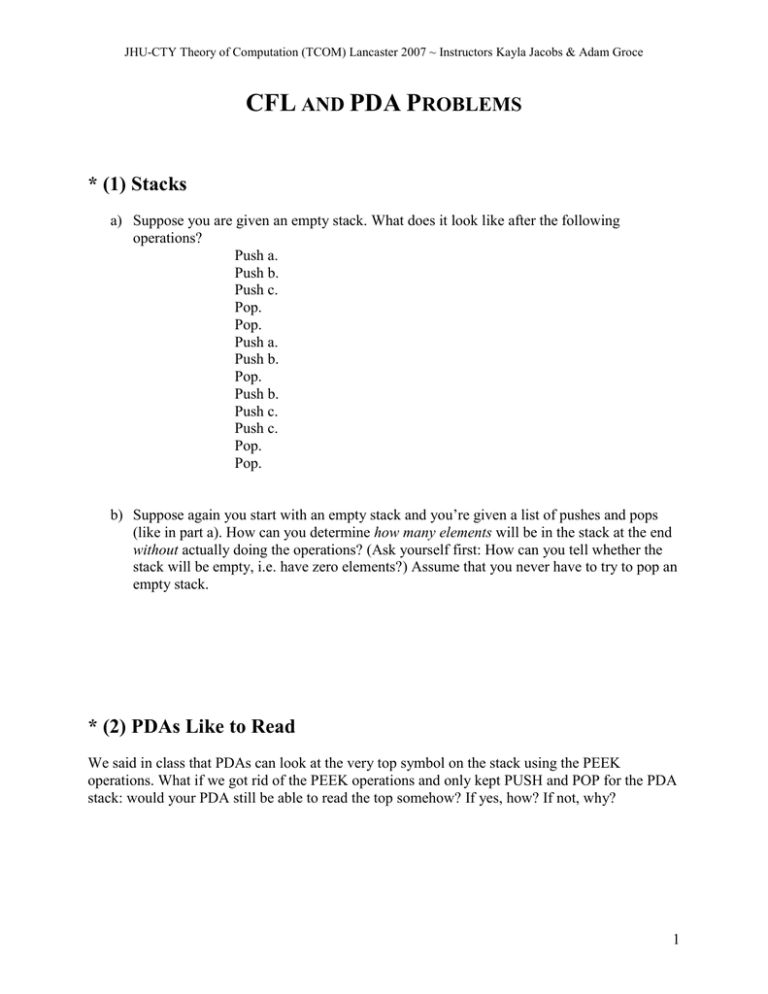
JHU-CTY Theory of Computation (TCOM) Lancaster 2007 ~ Instructors Kayla Jacobs & Adam Groce
CFL AND PDA PROBLEMS
* (1) Stacks
a) Suppose you are given an empty stack. What does it look like after the following
operations?
Push a.
Push b.
Push c.
Pop.
Pop.
Push a.
Push b.
Pop.
Push b.
Push c.
Push c.
Pop.
Pop.
b) Suppose again you start with an empty stack and you’re given a list of pushes and pops
(like in part a). How can you determine how many elements will be in the stack at the end
without actually doing the operations? (Ask yourself first: How can you tell whether the
stack will be empty, i.e. have zero elements?) Assume that you never have to try to pop an
empty stack.
* (2) PDAs Like to Read
We said in class that PDAs can look at the very top symbol on the stack using the PEEK
operations. What if we got rid of the PEEK operations and only kept PUSH and POP for the PDA
stack: would your PDA still be able to read the top somehow? If yes, how? If not, why?
1
JHU-CTY Theory of Computation (TCOM) Lancaster 2007 ~ Instructors Kayla Jacobs & Adam Groce
** (3) Making PDAs
Give a PDA that recognizes each of the following languages as by both describing an NFA-witha-stack machine and by writing an informal English description of the PDA.
a) The language {anbn | n>= 0}
b) The complement of the language {anbn | n>= 0}
(continued)
2
JHU-CTY Theory of Computation (TCOM) Lancaster 2007 ~ Instructors Kayla Jacobs & Adam Groce
(continued)
c) The set of strings over the alphabet {a, b} with more a’s than b’s.
d) {x1#x2#x3#...#xk | k≥ 1, Σ = {a, b}, and at least two of the x’s are reverses of each other}
3
JHU-CTY Theory of Computation (TCOM) Lancaster 2007 ~ Instructors Kayla Jacobs & Adam Groce
** (4) Ambiguous Grammar: Why Dating is Confusing
(From Sipser, Introduction to the Theory of Computation, 2nd ed., section 2.1)
Show that the string
the girl touches the boy with the flower
… has two different leftmost derivations in the grammar G2 on your handout (Sipser, p 101).
Describe in English, or draw pictures for, the two different real-world meanings of the string.
**/**** (5) Ambiguous Programming Language Grammar
(From Sipser, Introduction to the Theory of Computation, 2nd ed., Problem 2.27)
Let G be the following grammar:
<STMT> <ASSIGN> | <IF-THEN> | <IF-THEN-ELSE>
<IF-THEN> if condition then <STMT>
<IF-THEN-ELSE> if condition then <STMT> else <STMT>
<ASSIGN> a:=1
Set of terminals Σ = {if, condition, then, else, a:=1}
Set of variables V = {<STMT>, <IF-THEN>, <IF-THEN-ELSE>, <ASSIGN>}
G is a natural-looking grammar for a fragment of a programming language. But G is ambiguous.
** a) Show that G is ambiguous. (Hint: Give a string generated by G and show you can derive it
two different ways by drawing two different parse trees for it.)
4
JHU-CTY Theory of Computation (TCOM) Lancaster 2007 ~ Instructors Kayla Jacobs & Adam Groce
**** b) Give a new unambiguous grammar for the same language: it should recognize exactly the
same strings, but not have any possibility of ambiguous derivations.
**** (6) CFL Closure Under Regular Operations
Context-free languages are closed under the regular operations (union, concatenation, star), but
not under complementation or intersection.
a) Prove CFLs are closed under union.
(Hint: Start with two CFLs, L1 and L2, and show that their union must be a CFL too.)
(continued)
5
JHU-CTY Theory of Computation (TCOM) Lancaster 2007 ~ Instructors Kayla Jacobs & Adam Groce
(continued)
b) Prove CFLs are closed under concatenation.
c) Prove CFLs are closed under star.
6
